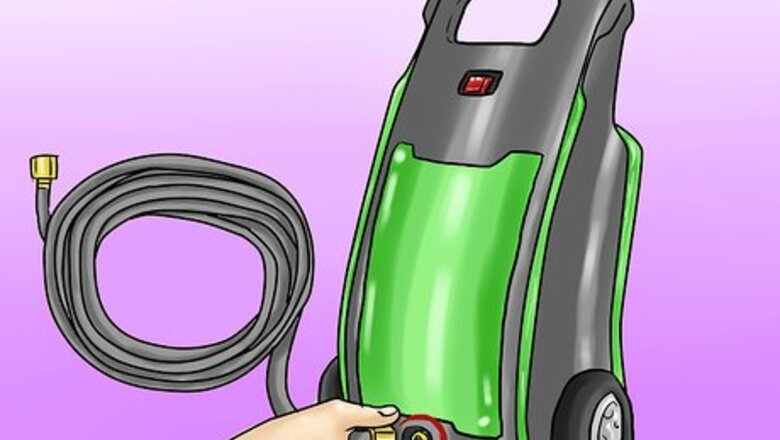
views
Set Up an Electric Power Washer
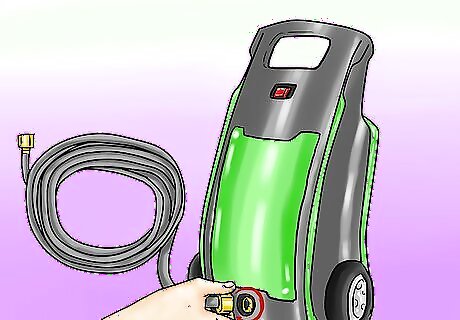
Connect the high-pressure hose that comes with the pressure washer. Insert the hose into the high-pressure inlet, usually found on top of the water inlet for the garden hose, and tighten it.
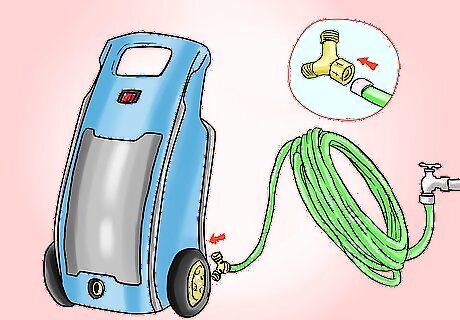
Attach the garden hose. Thread a coupler attachment onto your garden hose. A coupler attachment twists on to the end of the garden hose. It can then be threaded to any attachments on the power washer. Insert the garden hose into the water inlet and tighten it.
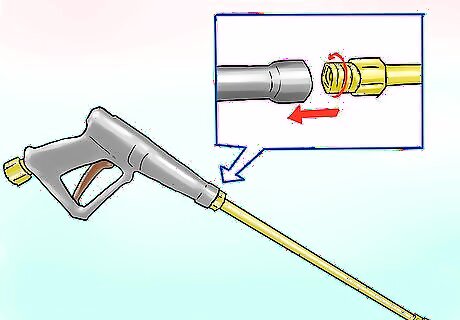
Set up the spray gun. Attach the extension lance (or wand) to the spray gun and twist it to lock it in place. Many wands have interchangeable tips to offer different spray volume and pattern.
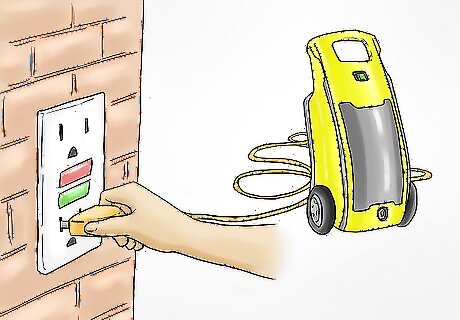
Connect the pressure washer to your power source. Plug the power cord into your outdoor outlet. The cord should be running on a ground fault circuit interrupter (GFCI), which will light up to indicate that it is getting power.
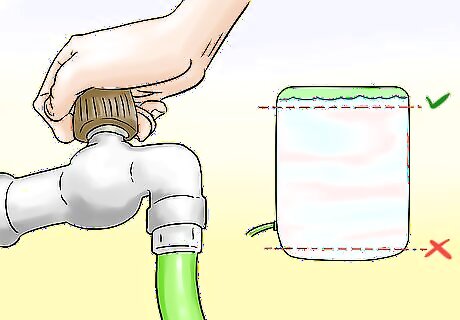
Turn on the water faucet, you do not want to run the high pressure water pump without a sufficient water supply, or the pump can be damaged.
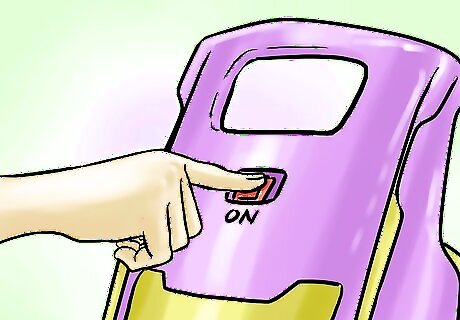
Turn on the washer. Hit the "On" button to begin washing. The power washer will deliver full power when you pull the trigger, and will pause when you release the trigger.
Set Up a Gas Power Washer
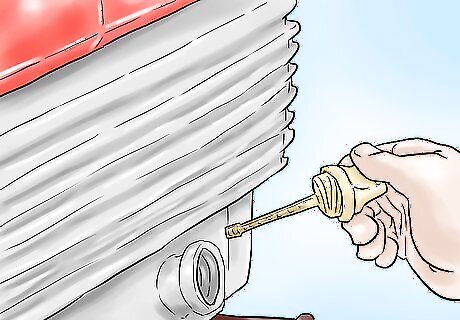
Check the oil tank of the power washer. Remove the oil dipstick and check the levels. Add more oil if the levels are low, but do not overfill the engine crankcase.
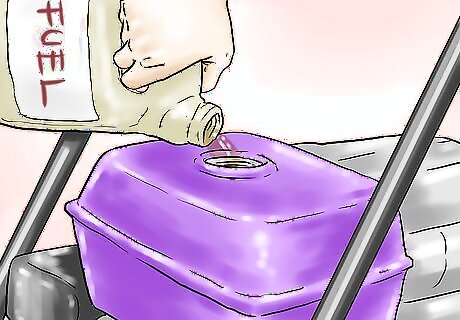
Fill the fuel tank with fuel. Small residential pressure washers generally use gasoline, larger commercial ones may use diesel fuel instead.
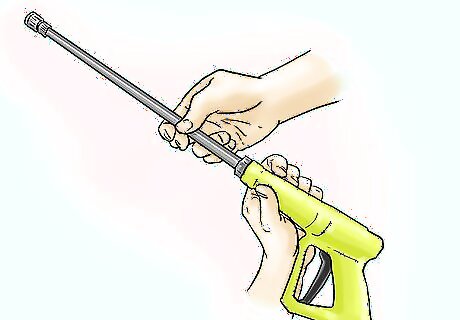
Set up the spray gun. Attach the extension wand to the spray gun and tighten it.
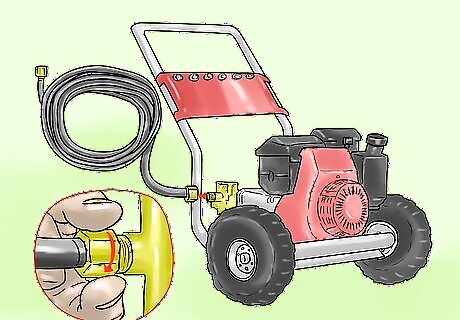
Set up the high-pressure hose. Attach 1 end of the high-pressure hose to the spray gun and the other end to the high-pressure inlet on the machine. Tighten all connections.
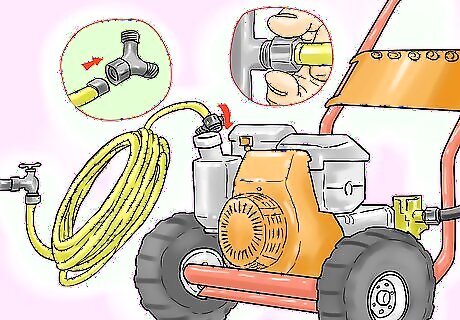
Connect to the water source. Turn on your spigot, attached to your garden hose, and let the water run until it's clear. Turn off the water. Thread a coupler on to your garden hose, attach the hose to the water inlet and tighten the coupler. Turn on the water supply.
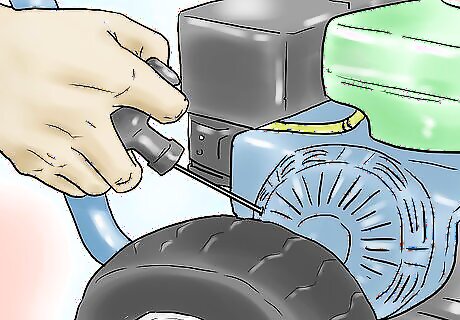
Start the engine. Depending on the model, you may use a choke or a primer bulb to prime the carburetor, then pull the start cord. Adjust the throttle to a suitable running speed. The spray gun will work at full force and pause when you release the trigger.




















Comments
0 comment